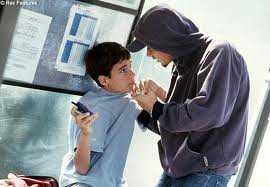Best Practices in Bullying Prevention
This list of Best Practices is taken with permission from stopbullyingnow.hrsa.gov and is based partly on Limber, S. P. (2004, Winter), What works and doesn't work in bullying prevention and intervention. Student Assistance Journal. 16-19.1. Focus on the social environment of the school. In order to reduce bullying, it is important to change the social climate of the school and the social norms with regards to bullying. This requires the efforts of everyone in the school environment-teachers, administrators, counselors, school nurses, other non-teaching staff (such as bus drivers, custodians, cafeteria workers, and/or school librarians), parents, and students.
2. Assess bullying at your school. Adults are not always very good at estimating the nature and prevalence of bullying at their school. As a result, it can be quite useful to administer an anonymous questionnaire to students about bullying. A number of bullying prevention programs listed in the Resource Kit include these measures.
3. Obtain staff and parent buy-in and support for bullying prevention. Bullying prevention should not be the sole responsibility of any single individual at a school. To be most effective, bullying prevention efforts require buy-in from the majority of the staff and from parents. However, bullying prevention efforts should still begin even if immediate buy-in from all isn't achievable. Usually, more and more supporters will join the effort once they see what it's accomplishing.
4. Form a group to coordinate the school's bullying prevention activities. Bullying prevention efforts seem to work best if they are coordinated by a representative group from the school. This coordinating team might include:
2. Assess bullying at your school. Adults are not always very good at estimating the nature and prevalence of bullying at their school. As a result, it can be quite useful to administer an anonymous questionnaire to students about bullying. A number of bullying prevention programs listed in the Resource Kit include these measures.
3. Obtain staff and parent buy-in and support for bullying prevention. Bullying prevention should not be the sole responsibility of any single individual at a school. To be most effective, bullying prevention efforts require buy-in from the majority of the staff and from parents. However, bullying prevention efforts should still begin even if immediate buy-in from all isn't achievable. Usually, more and more supporters will join the effort once they see what it's accomplishing.
4. Form a group to coordinate the school's bullying prevention activities. Bullying prevention efforts seem to work best if they are coordinated by a representative group from the school. This coordinating team might include:
- an administrator
- a teacher from each grade
- a member of the non-teaching staff
- a school counselor or other school-based mental health professional, and
a parent
The team should meet regularly to review findings from the school's survey; plan specific bullying prevention activities; motivate staff, students, and parents; and ensure that the efforts continue over time.
5. Provide training for school staff in bullying prevention. All administrators, faculty and staff at a school should be trained in bullying prevention and intervention.BIn-service training can help staff members to better understand the nature of bullying and its effects, how to respond if they observe bullying, and how to work with others at the school to help prevent bullying.
6. Establish and enforce school rules and policies related to bullying. Developing simple, clear rules about bullying can help to ensure that students are aware of adults' expectations that they not bully others and that they help students who are bullied. School rules and policies should be posted and discussed with students and parents. Appropriate positive and negative consequences should be developed.
7. Increase adult supervision in "hot spots" for bullying. Bullying tends to thrive in locations where adults are not present or are not watchful. Adults should look for creative ways to increase adult presence in locations that students identify as "hot spots."
8. Intervene consistently and appropriately when you see bullying. Observed or suspected bullying should never be ignored by adults. All school staff should learn effective strategies to intervene on-the-spot to stop bullying. Staff members also should be designated to hold sensitive follow-up meetings with students who are bullied and (separately) with students who bully. Staff members should involve parents whenever possible.
9. Devote some class time to bullying prevention. Students can benefit if teachers set aside a regular period of time (e.g., 20–30 minutes each week or every other week) to discuss bullying and improving peer relations. These meetings can help teachers to keep their fingers on the pulse of students' concerns, allow time for discussions about bullying and the harms that it can cause, and provide tools for students to address bullying problems. Anti-bullying messages also can be incorporated throughout the school curriculum.
10. Continue these efforts. There should be no "end date" for bullying prevention activities. Bullying prevention should be continued over time and woven into the fabric of the school environment.
5. Provide training for school staff in bullying prevention. All administrators, faculty and staff at a school should be trained in bullying prevention and intervention.BIn-service training can help staff members to better understand the nature of bullying and its effects, how to respond if they observe bullying, and how to work with others at the school to help prevent bullying.
6. Establish and enforce school rules and policies related to bullying. Developing simple, clear rules about bullying can help to ensure that students are aware of adults' expectations that they not bully others and that they help students who are bullied. School rules and policies should be posted and discussed with students and parents. Appropriate positive and negative consequences should be developed.
7. Increase adult supervision in "hot spots" for bullying. Bullying tends to thrive in locations where adults are not present or are not watchful. Adults should look for creative ways to increase adult presence in locations that students identify as "hot spots."
8. Intervene consistently and appropriately when you see bullying. Observed or suspected bullying should never be ignored by adults. All school staff should learn effective strategies to intervene on-the-spot to stop bullying. Staff members also should be designated to hold sensitive follow-up meetings with students who are bullied and (separately) with students who bully. Staff members should involve parents whenever possible.
9. Devote some class time to bullying prevention. Students can benefit if teachers set aside a regular period of time (e.g., 20–30 minutes each week or every other week) to discuss bullying and improving peer relations. These meetings can help teachers to keep their fingers on the pulse of students' concerns, allow time for discussions about bullying and the harms that it can cause, and provide tools for students to address bullying problems. Anti-bullying messages also can be incorporated throughout the school curriculum.
10. Continue these efforts. There should be no "end date" for bullying prevention activities. Bullying prevention should be continued over time and woven into the fabric of the school environment.








